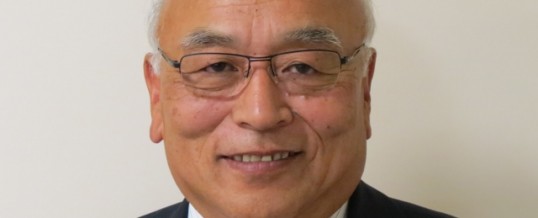
K. Ken Fujimoto
One of the things for which Jodo Shinshu ministers are often criticized is the use of the passive voice. This may seem to have merit, especially in this day and age where people want to take a more proactive stance on everything that they do, but there is much that can be gained from the viewpoint that the passive voice can give us.
Recently, the Morgan Hill group did the omigaki, the polishing of the brass altar pieces. Here, at the Betsuin, the Buddhist Women’s Association takes the lead and polishes the pieces just before our Obon services. Most of our temples on the mainland will have omigaki twice a year. This is usually sufficient since we do not burn oil in the lamps so the buildup of soot is not as bad as it might be at temples in Japan. The bad part about this is that people do not do it as regularly so they often forget what needs to be done in the interim.
When we do this most people will say, “We have to clean/polish the altar pieces.” The better way of expressing this would be, “We are being given the opportunity to clean the pieces.” This may seem like simple rationalization and a “sales pitch” on my part, but it is more than that. People are being given the opportunity to see the pieces from close up or at least from a point of view that they would not normally have.
People look at our naijin, the altar area, all the time, but there is so much that they do not see. Getting close and looking at things from different angles enables them to see more than they had before. This, in turn, gives them an opportunity to ask and learn things that they may have never considered.
One such example is the urna, a curl of white hair that the Buddha statue has between the eyebrows. It is explained that a beam of light emanates from there and goes out in the ten directions and then comes back into the wisdom eye that is often depicted as a lump on the head, and sometimes enhanced with a small gemstone. This symbolizes the ability to see things in our world that are not seen with the physical eye; things that cannot be seen in the normal sense of the word.
Another example is the aura of light emanating from the body of the Buddha on many of our statues. This is seen by some as being like the wings of an angel, but it is an artist’s depiction that stresses the glow that seems to envelope an enlightened being. In some sutras, it states that there are beams of light that emanate from each pore on the skin of a Buddha that reaches out and illuminate all in the ten directions.
All of these are important on their own, but they are things to which we normally do not pay attention. Being given the opportunity to polish and clean the altar area enables us to see that which we would probably never notice. However, if we undertake this task with the attitude of, “We have to clean the pieces,” we would most likely, never take advantage of the situation to see these things.
“We are being given the opportunity to clean,” will more likely put us in a mood to look and see what is there. This can lead to our growth in understanding of the lessons being communicated and a deeper appreciation for what we have and had never noticed before.
The passive voice can be a very dynamic and powerful tool in the appreciation of the Buddha-dharma.
JAN
